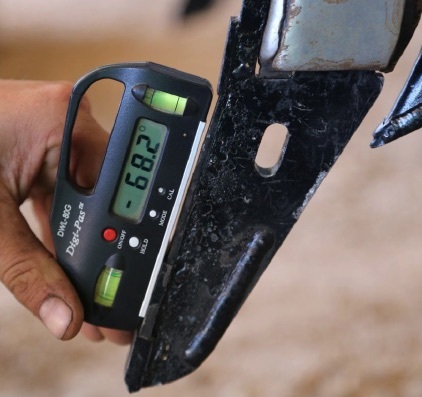Mecardo Analysis - Wool production to fall again this season
- By: "Farm Tender" News
- Ag Tech News
- Sep 12, 2019
- 409 views
- Share

This article is bought to you by Warrick Hay & Grain and Air Seeder Consulting Services.
By Andrew Woods | Source: AWTA, AWEX, BOM, ICS
Key points
· Seasonal conditions are set to push the annual production lower than the official forecast.
· At this stage, wool production looks set to repeat the consecutive falls seen in 2001-02 and 2002-03.
· This time around extraordinarily dry seasonal conditions by the standard of the past century are the key driver in pushing wool production lower.
As the spring unfolds, it appears that agricultural production will take another hit in 2019-2020. This article takes a look at greasy wool production in light of the deterioration in seasonal conditions.
The August Australian Wool Forecasting Production Committee (AWPFC) report projects a 5% decline in wool production for this season after a fall of 12.1% last season (view report). August is a tough time to make such projections, especially if seasonal conditions are hanging in the balance as they were this year in many regions. With another month passed, the 5% projection is looking too conservative.
Ad- Warrick Hay & Grain - Professional Grain and Hay Storage - Ad
Ad - Get your Seeder set up the right way. Contact Air Seeder Consulting Services and have your Seeder running right before you start - Ad
Figure 1 shows the season total volumes for AWTA core tests (farm bales) and the season on season change in these volumes from the early 1990s, with a projection of a 10% fall for this season (2019-2020). In 2001-02 and 2002-03, the AWTA volume fell by 10.9% and 12.2%, so there is recent precedent for two consecutive years of big production falls. Note that during this period, production stepped down from around 3.25 million bales to 2.7 million bales, before stabilising. In other words production shrank and did not recover the lost volume.
After falling in the late 1990s, AWTA volume steadied in 2009-2010 around 2-2.1 million bales and stayed there through to 2017-18. With the assumed fall of 10% in AWTA volumes this season, the total will end up around 1.6 million bales for 2019-2020. At best in the short term, the industry is looking for AWTA supply to stabilise around the 1.6 million bale level.
Will the wool industry recover some of the lost production? The early 2000's fall is not a good guide to what is likely to happen. The drop in production was followed by a period of depressed 20 micron and broader Merino prices in the late 1990s, weighed down by the last of the RPS stockpile and depressed apparel fibre prices generally.
The current step down in production is nearly all due to dry conditions. Figure 2 shows season averages for 12 month rainfall ranks (with the rainfall data advance by 4 months). The rainfall data is advanced by four months to better line up rainfall and the subsequent volume of wool tested by the AWTA (it takes time to grow pasture, east the pasture, convert to wool, shear the wool and ship it to store for testing). As such the 12 month rainfall ranking to August is advanced to December so we have a good idea of the rainfall ranking for the season. Median rainfall is used to fill in the remaining 6 months of data. Note how 2018-19 and 2019-20 are shaping up to be the worst pair of consecutive seasons in terms of rainfall rank in the graph. In fact, they are the worst pair of seasons (keeping in mind 2019-20 is still a part projection since the early 20th century. Only 1944-45 to 1945-6 and 1915-16 to 1916-17 come close.


What does this mean?
The pressure on the supply chain from lower wool production (Merino and crossbred) in Australia looks set to intensify. Supply issues have taken a back seat to weaker demand in recent months but continue to build in the background. Supply alone will not bring back 2000 cents plus for 21 micron wool, but it will help produce price volatility as the supply chain grapple with balancing demand and (lower) supply.
Ad- Warrick Hay & Grain - Professional Grain and Hay Storage - Ad
Ad - Get your Seeder set up the right way. Contact Air Seeder Consulting Services and have your Seeder running right before you start - Ad 












Share Ag News Via